
Sustainability! More and more the world is turning its attention to a vision of bluer skies, more forests, cleaner air. . . But to get there, we first need to promote awareness and action about the industries and behavior holding us back.
One of the key industries — in fact, the second most polluting industry (after oil!) — is fashion. With trends coming and going and the time between design and production being minimized for profits, the ecological and human aspects of clothing production are being sacrificed by some of the biggest brand names out there.
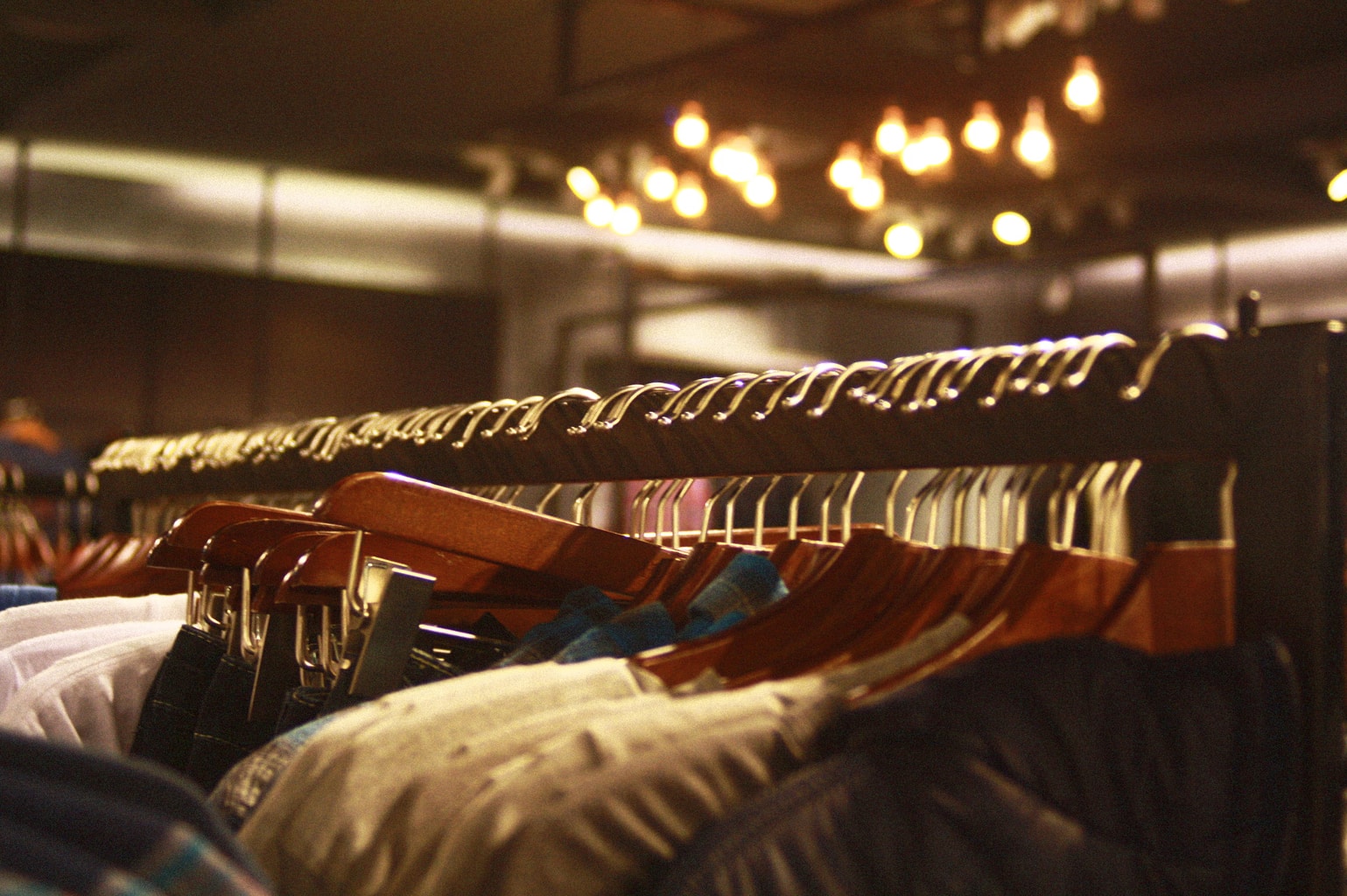
But what can we do? These fast fashion brands are often the most within our budget without foregoing quality and chicness, and also the most accessible!
That’s where this column comes in. Sustainable Fashion 101 is here to provide different options and brands to look out for, spread awareness of key organizations fighting for laborers’ and environmental rights, and educate, much like your average college course — but a lot more fun!
Disclaimer: Ultimately the blame falls on corporations, not the individual actions of consumers like you or me — we can’t help it if certain brands aren’t transparent about their processes and treatment of their workers.
So if you feel like this is a real big battle to fight, you’re not alone! What a consumer produces as waste pales in comparison to the large-scale actions of corporations. What we can do, however, is raise awareness and protest them for fairer wages, less pollution, etc. We can also vote with our dollars whenever possible.
And always keep a careful eye out for “greenwashing” — pretending to be sustainable for more sales. (This already happens with feminist and pride slogans!)
First, let’s run the numbers and analyze just what the effects of fast fashion are.
Table of Contents
Running the Numbers
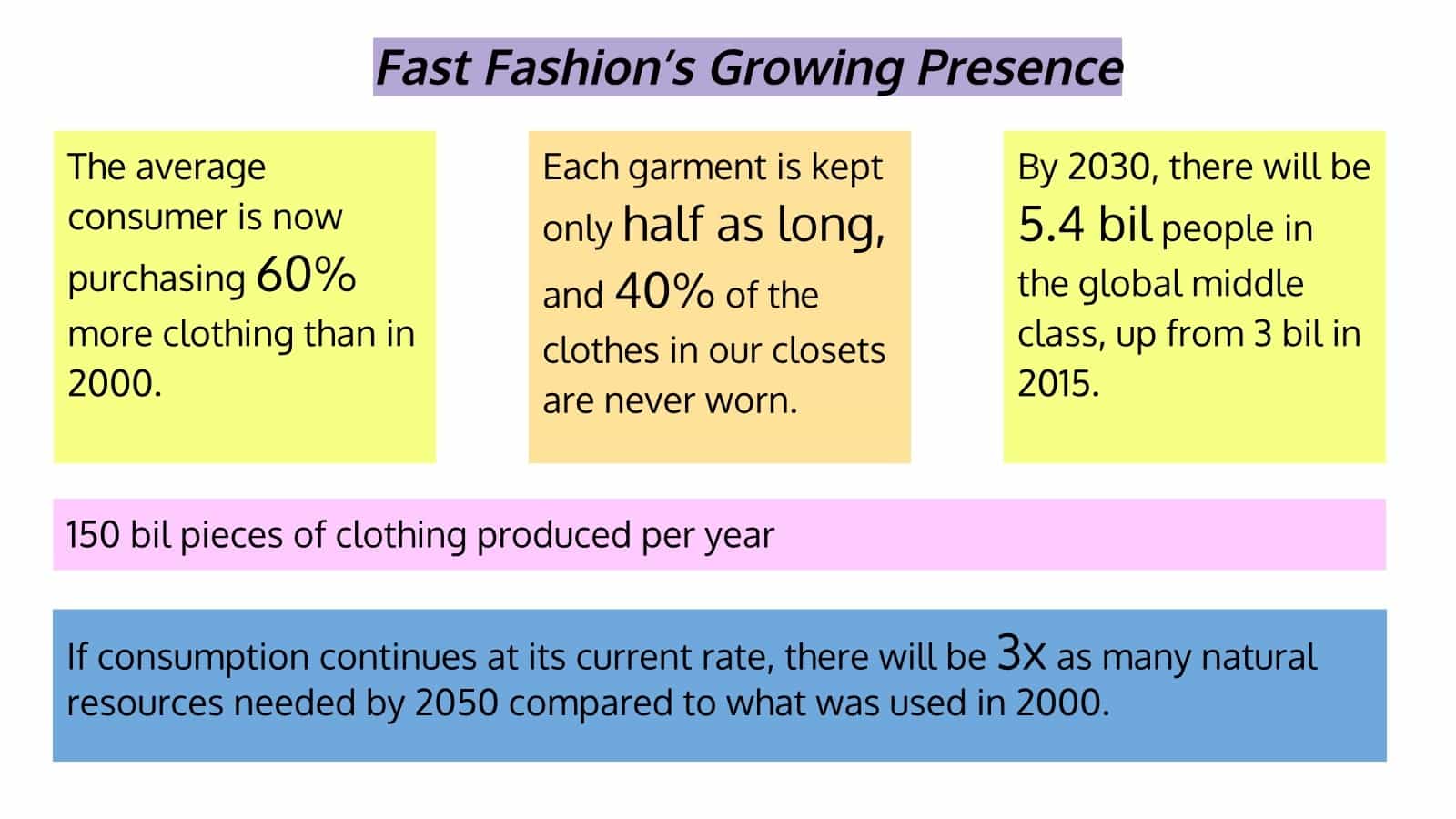
Taken from a UN Economic Commission for Europe report on how the UN Sustainable Development Goals tie in with fashion, these figures are pretty intense! Couple them with shorter buying cycles, and we’ve got negative effects all around, including:
- increased carbon emissions
- water waste
- release of pesticides/dyes into water systems
- growing landfills
- poor working conditions and mass impoverishment
Let’s take a closer look at the effects of fast fashion waste on land, air, water, and most importantly, the people behind the clothing.
Effects on Land

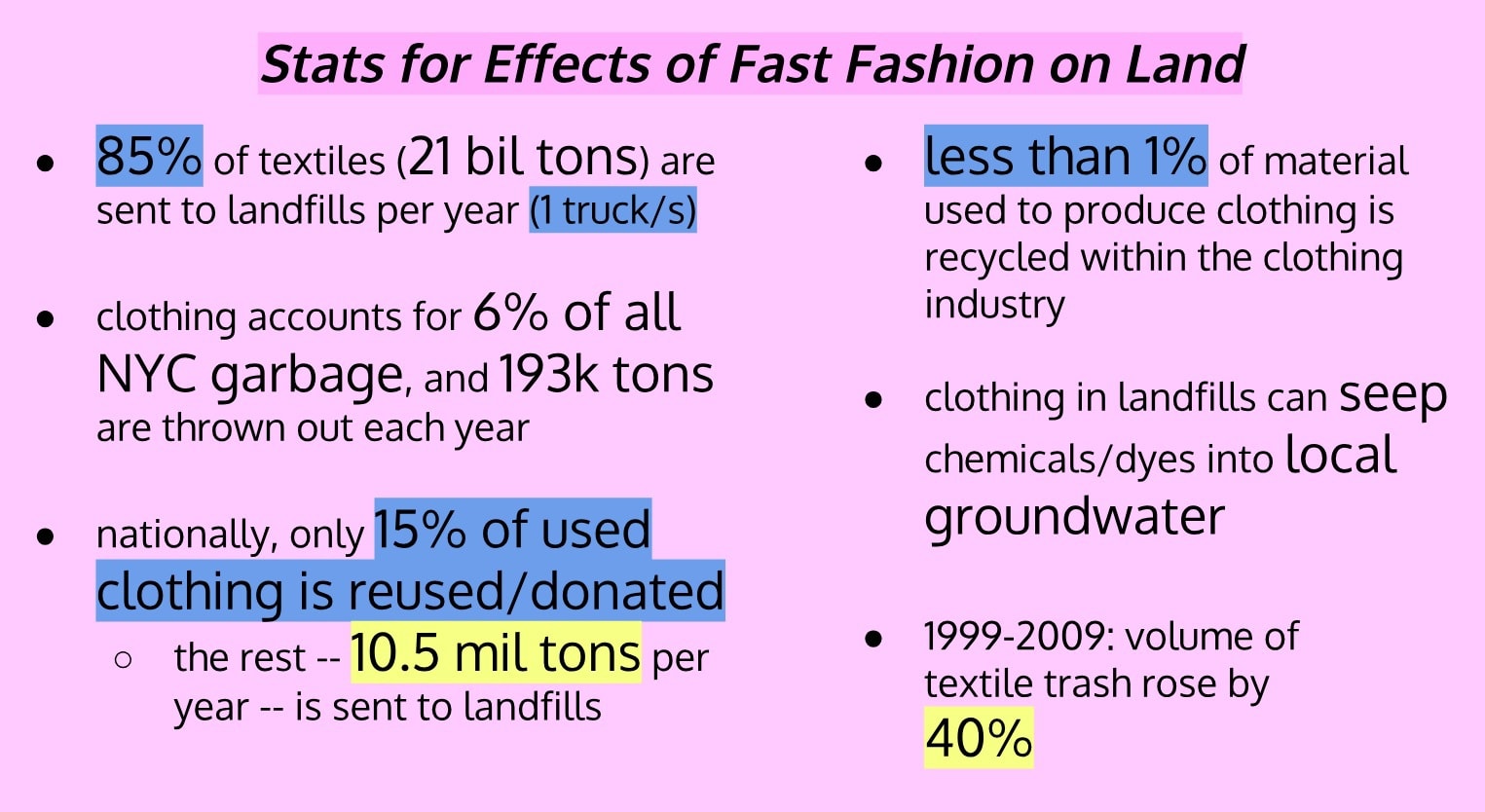
It’s crazy to think that millions of tons of clothing are thrown out each year in the US — I can’t even imagine the space that would need!
Effects on Air

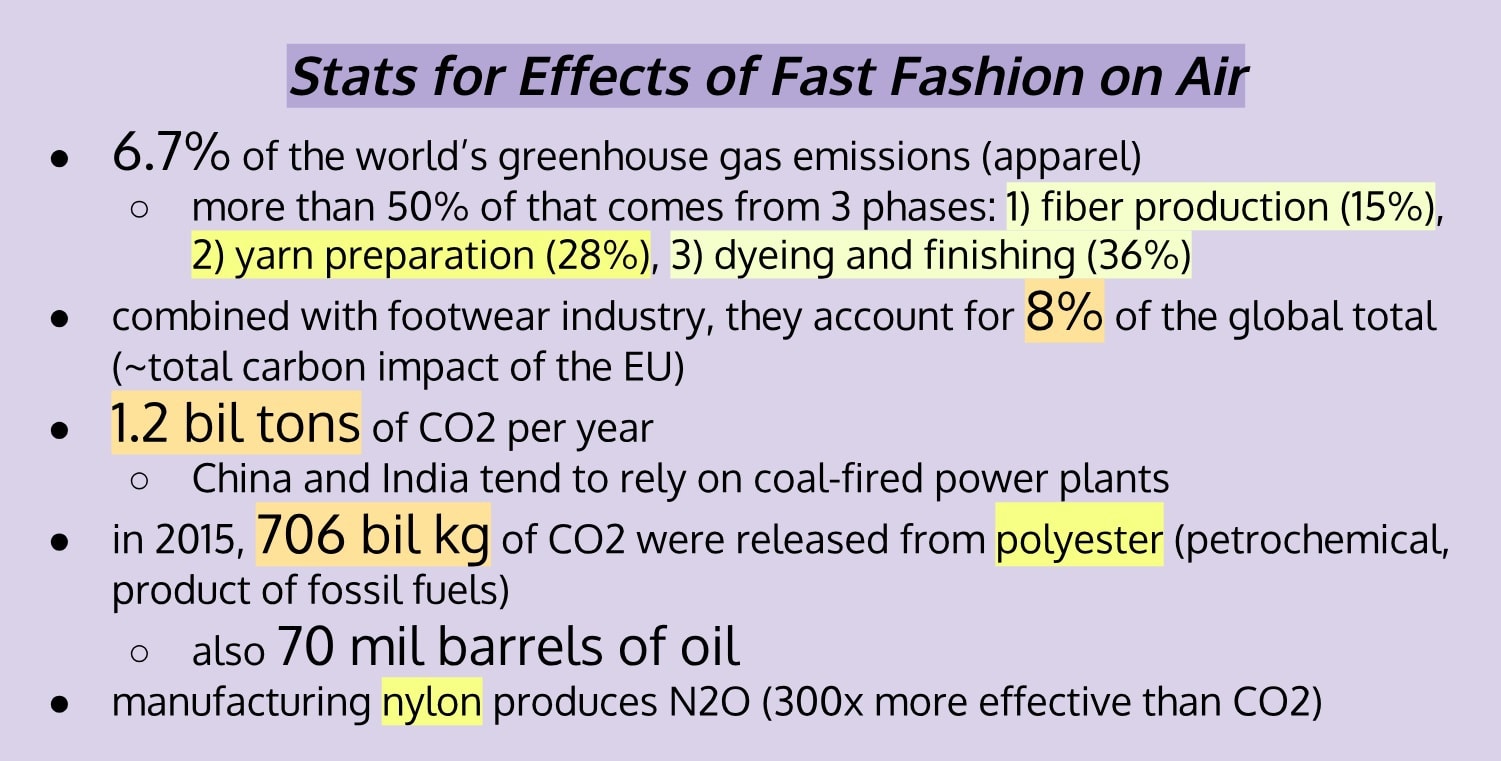
A lot of clothing is in fact made from synthetic fabrics like polyester and nylon, so I was shocked to learn that these come from oil and plastics.
Effects on Water

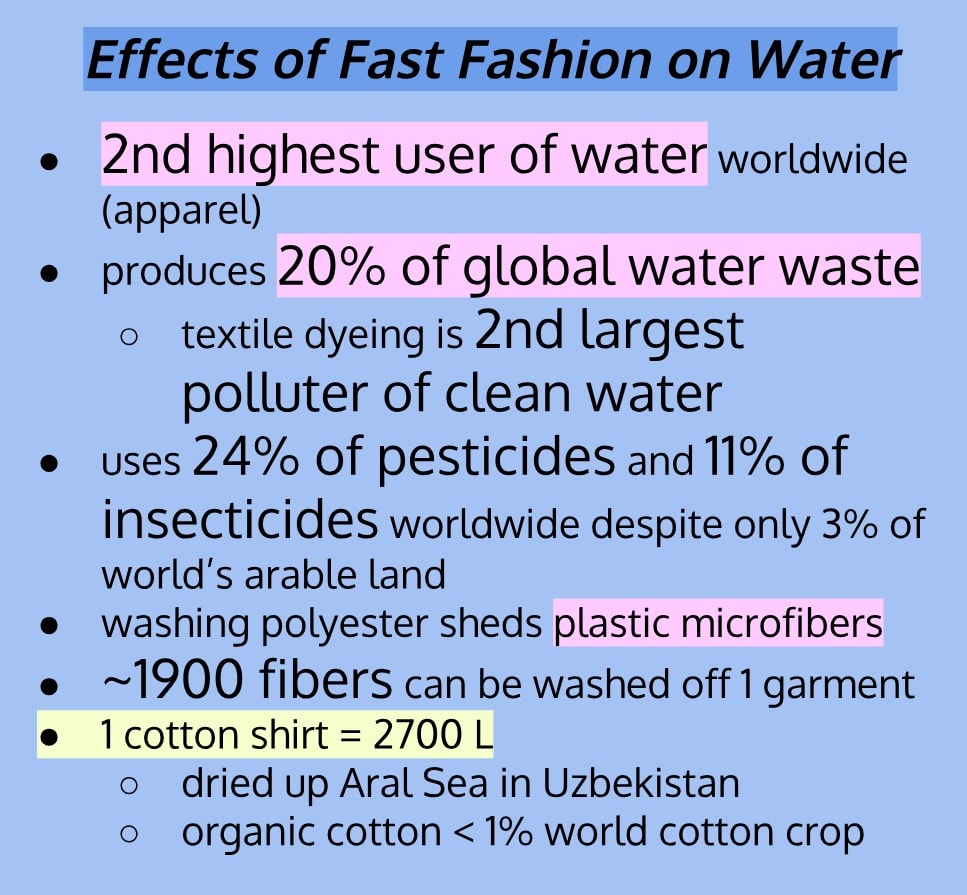
And cotton growing is such a water-intensive process! Naturally a thirsty plant, cotton will suck up 2700 L of water to produce just one shirt.
Effects on Workers
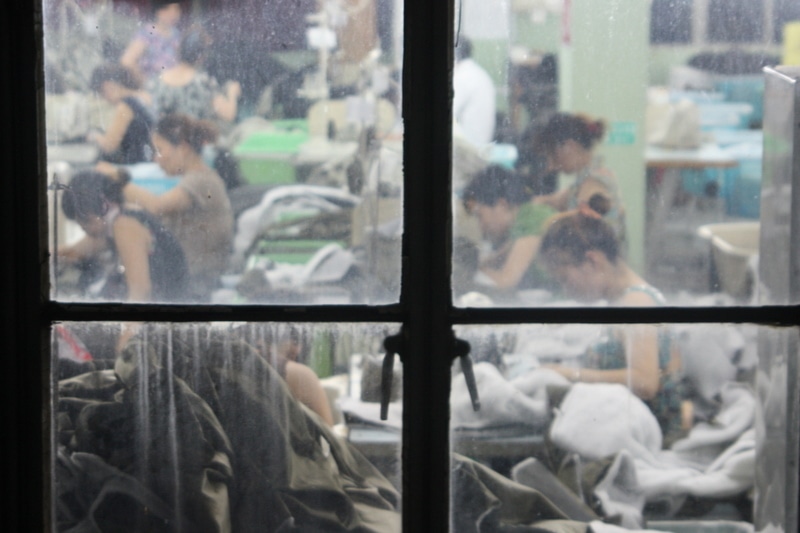
Finally, we arrive at the human aspect. Garment working requires the dexterity and judgment of people, but these workers are often treated inhumanely. They are not only paid barely livable wages but are also disproportionately women, making them much more vulnerable to sexual harassment and discrimination.
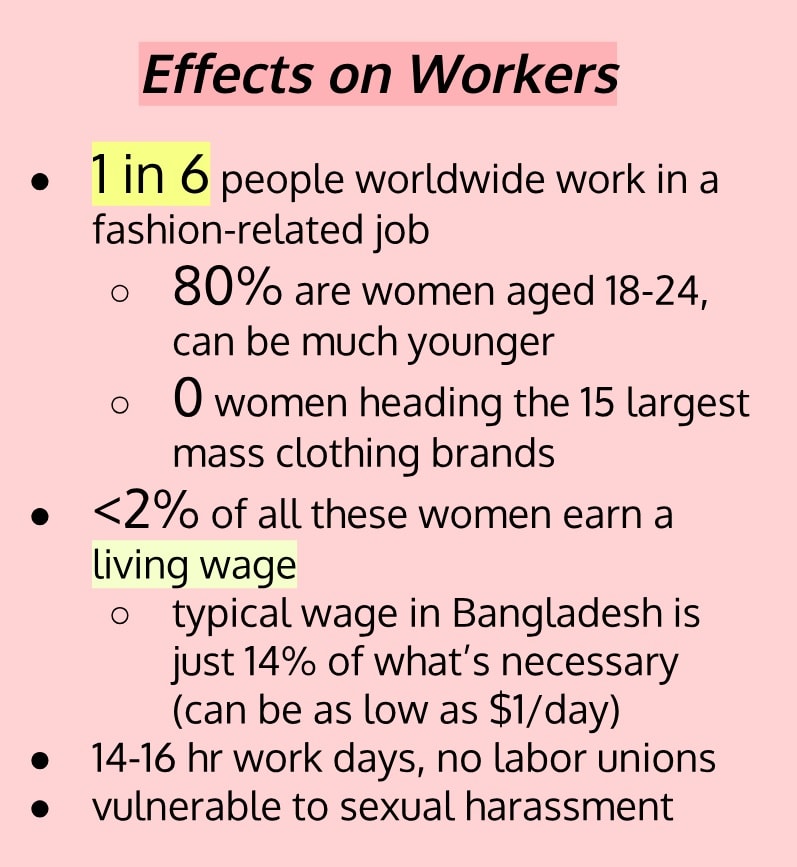
Human rights can easily get lost in the layers of outer organizations handling factories and shipment, so much so that it’s even common for bigger brands to not know who exactly is making their clothing. So, in short, fast fashion is bad all around.
What can we, as consumers, do?

All of these statistics are a doozy! And it’s hard to truly put the finished product together with everything it took to get to there — how do we associate a sparkling dress on the rack with poorly maintained factories and environmental harm?
Not to worry! On an individual level, we can take these steps:
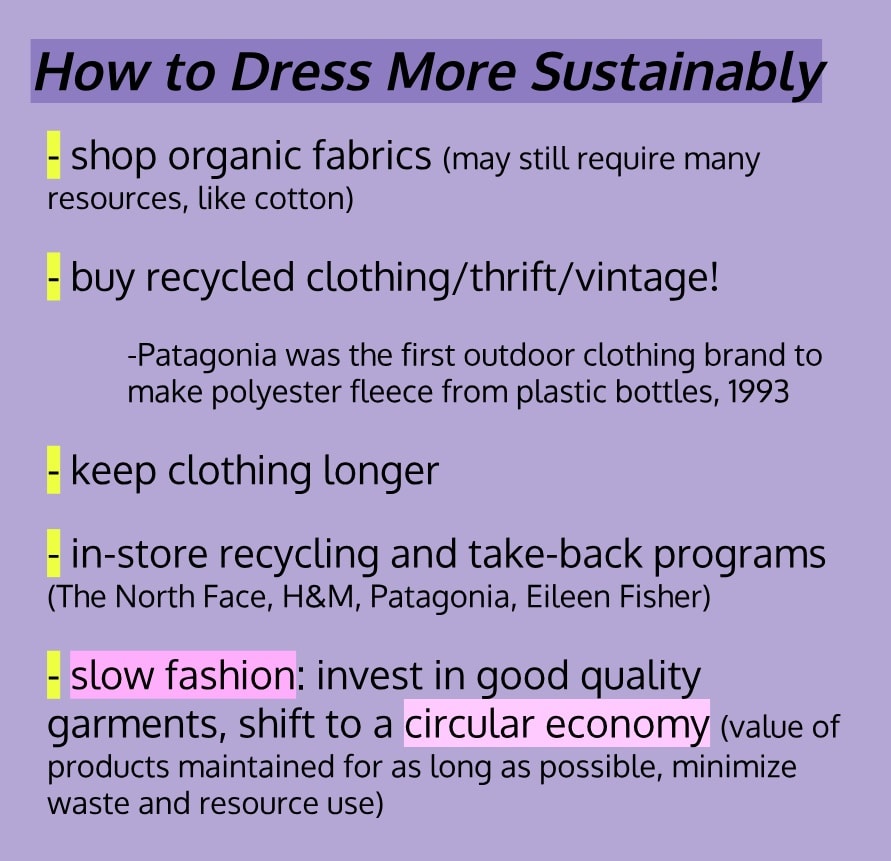
Sometimes, dressing more sustainably is as easy as valuing the clothes already in your closet. Though trends are fun to take part in, maybe even essential to your personal sense of style, it is still good to step back and love your current wardrobe!
Slow fashion is also gaining momentum as a movement, emphasizing the need for lasting quality, sustainable manufacture, and fair treatment of laborers — though the prices are higher, the amount of wear pays off in the long run! (See: Why you should spend more for quality clothing for more on this.)
On a grander scale, we should make the corporations take responsibility, and duly so:
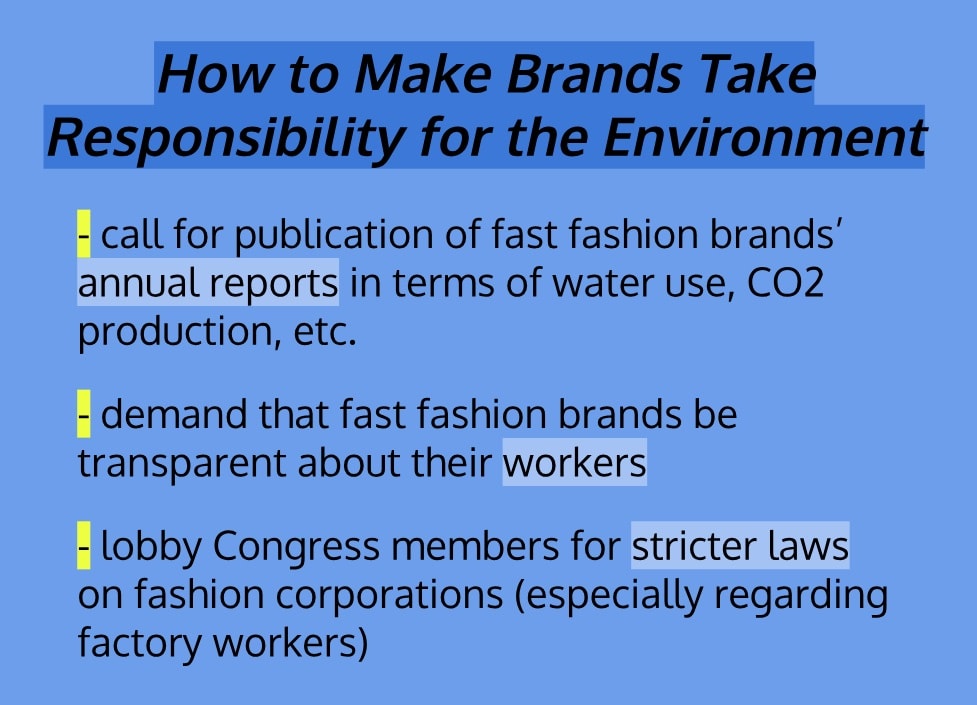
H&M has already put into place a Sustainability Report and launched the Conscious collection, though it’s also worth considering that brands like to ‘go green’ to boost sales.
I titled this post in honor of the documentary The True Cost, which presents an eye-opening perspective on the fashion industry from its workers. Watching that documentary is another way to start to help.
Though I wish I could see fast fashion as all glam, I recognize it as my responsibility, and ours, to do what we can in response to its not-so-fabulous record, and to acknowledge the true cost of our clothing.
What do you think?
That concludes our introduction to Sustainable Fashion 101!
Learning in depth about fast fashion can be a sobering experience. Luckily, we’ve got what it takes to not just educate ourselves but go out and change things for the better! Soon we’ll be fitting Mother Earth herself with an eco-friendly wardrobe.
Tune in to next time’s installment for a list of noteworthy sustainable fashion brands!
What are you doing to dress more sustainably? What concerns you most about the fashion industry, and what should we do to fix things? Let me know in the comments!
